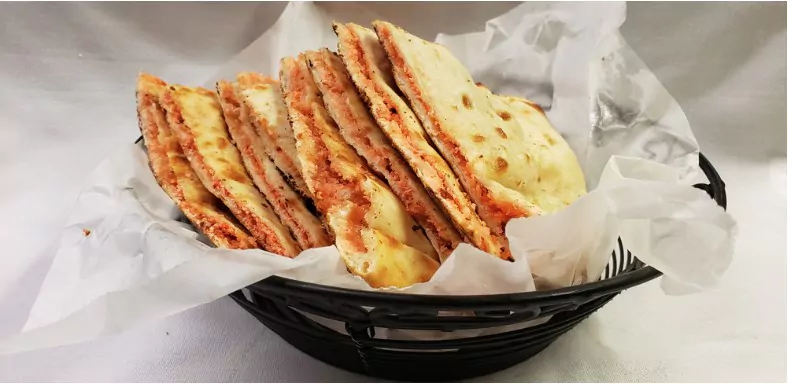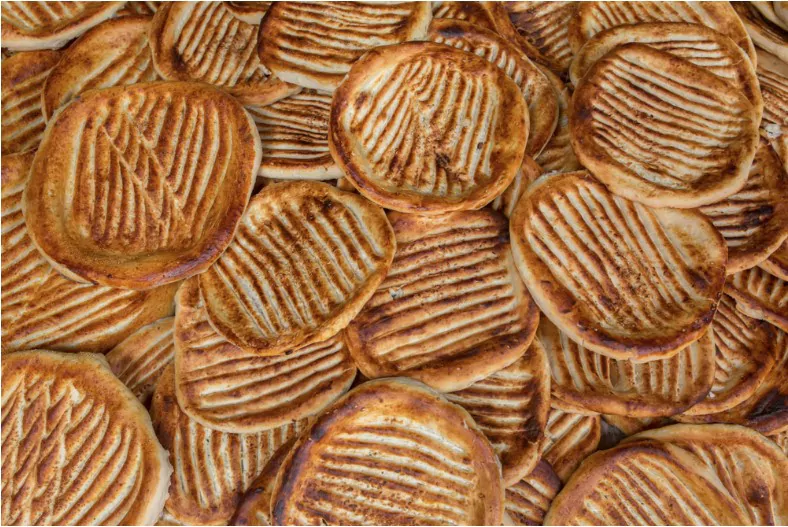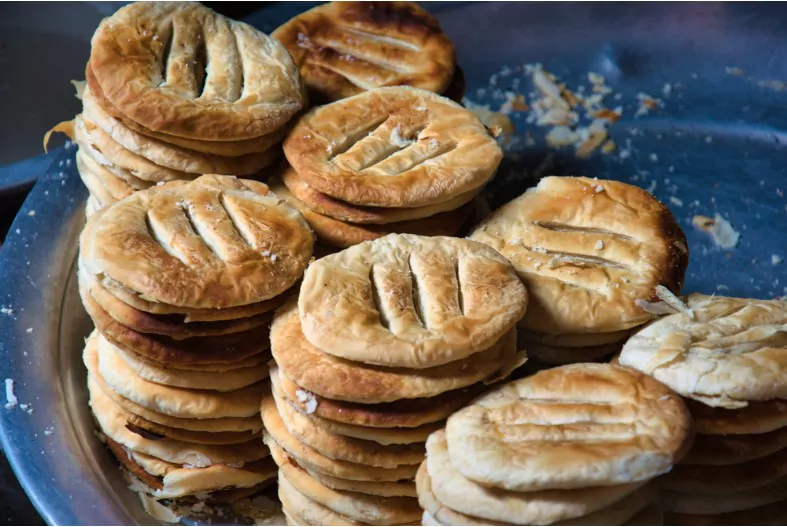Taste the Tradition: A Guide to Kashmiri Breads

There’s an air of irresistible mystery, warmth, and comfort around the topic of Kashmiri bread. These aren’t just essential elements of the Kashmiri diet but carry with them a rich history, cultural significance, and an array of mouth-watering flavours. If you’ve ever had the opportunity to experience the charm of a Kashmiri morning, you will appreciate how essential the Kashmiri bread or the Kashmiri roti is to start the day. However, understanding and savouring these wonderful creations is a journey in itself. So, let’s embark on this unforgettable gastronomic exploration of the world of Kashmiri breads.
1 A Morning Ritual: The Bakehouses of Kashmir
An integral part of Kashmir’s cultural fabric is its bakeries or ‘Kandurs’. These traditional bakeries start buzzing with activity long before sunrise. The wafting aroma of freshly baked Kashmiri bread or Kashmiri roti sets a captivating tone for the morning. If you ever visit Kashmir, these bakehouses are must-visit spots where you can witness the artistry of ‘Kandurs’ and the various types of Kashmiri breads they craft with utmost precision.
2 The Piping Hot Variety of Kashmiri Breads
When it comes to Kashmiri bread, the variety is nothing short of impressive. From the mildly sweet to the savoury, from the fluffy to the crusty, each kind of Kashmiri bread carries a unique taste profile.
The Kandur: Artisan of Kashmiri Breads

The art of making Kashmiri bread is as old as the region’s history, passed down from generation to generation. The craft is primarily practised by a community of bakers known as ‘Kandurs.’ Waking up before dawn, the Kandur prepares the ‘Tandoor’ (clay oven) to bake an array of mouth-watering Kashmiri breads that range from the simple ‘Girda’ to the festive ‘Roth.’
The Kandur’s workplace, known locally as ‘Kandur-Waan,’ is a traditional bakery that serves as a social hub. This warm and welcoming place brings the community together every morning, offering not just bread but a slice of Kashmiri life.
Girda: The Breakfast Staple

Starting your day with a ‘Girda’ is a common tradition in Kashmiri households. The Girda, a round Kashmiri bread with a soft centre and crisp crust, often adorned with sesame seeds, is a delight to the palate. Its rustic flavour pairs wonderfully with ‘Nun Chai,’ a traditional salted tea, setting the perfect tone for the day ahead.
Lavasa: The Paper-thin Delight

‘Lavasa’ is a Kashmiri bread that truly highlights the finesse of Kandur’s craft. This thin, round bread, almost translucent, requires a level of skill and experience that only comes with time. Often eaten with ‘Harissa,’ a hearty mutton dish, Lavasa offers an exceptional culinary experience.
Tsot and Tsochvoru: The Soft Duo
Tsot and Tsochvoru are two other popular forms of Kashmiri bread. While Tsot is a soft, mildly sweet bread topped with poppy seeds, Tsochvoru is slightly crispier and known for its distinct indents. Both breads pair brilliantly with the ‘Kahwa,’ a traditional Kashmiri saffron tea, creating a flavour profile that is quintessentially Kashmiri.
Bakarkhani: The Sweet Treat

Bakarkhani, a sweet, layered Kashmiri bread, is a testament to the diverse range of Kashmiri breads. Often consumed during special occasions and festivals, Bakarkhani’s soft texture and subtle sweetness make it a favourite among both locals and visitors.
Roth: The Festive Bread
‘Roth’ is a special Kashmiri bread baked during ‘Khir Bhawani,’ a significant local festival. This thick, round bread, embellished with dry fruits and nuts, is not an everyday bread but rather a festive treat symbolizing celebration and community.
3 Baking Techniques: The Heart of Kashmiri Bread
The uniqueness of Kashmiri bread also lies in the traditional baking techniques employed. These are usually baked in a special tandoor-like oven, called a ‘Kandur’. This method of baking imparts a distinct flavour and texture to the Kashmiri roti, setting it apart from the bread found in other cuisines. The process is elaborate, often starting in the early hours of the morning, requiring the Kandur’s skilled hands to mould, shape, and bake each bread with a careful balance of time and heat.
4 The Kashmiri Bread: A Cultural Pillar
To truly understand the significance of Kashmiri bread, one must look beyond its culinary role. Kashmiri breads aren’t just food items – they embody a way of life, a tradition passed down generations. They are symbolic of the Kashmiri spirit of resilience and warmth. The Kandur shops act as local meeting points where people gather, exchange pleasantries, and discuss their daily life, creating a sense of community that’s tightly interwoven with the aroma and taste of fresh Kashmiri roti.
5 Kashmiri Breads: An Experience Beyond Taste
If you’re someone who appreciates the complexity and diversity of cuisines, then exploring Kashmiri breads is a must. These breads aren’t just about satiating your hunger, but more about an experience – a sensory journey that engages your sight, smell, touch, and of course, taste. They tell a story of their own, representing the essence of Kashmir in every bite.
6 Wrapping Up
The world of Kashmiri breads is as diverse and vibrant as the region itself. Each type of bread, be it Tsot, Girda, or Baqerkhani, brings to the table a unique flavour, a distinct baking method, and a slice of Kashmir’s rich cultural heritage. They form an irreplaceable part of daily life and special occasions in Kashmir.
So, next time when you hear about Kashmiri bread or Kashmiri roti, remember, it’s not just bread – it’s a window into the heart of Kashmir, its culture, its people, and its unwavering spirit. A bite of the Kashmiri bread is a bite into the soul of Kashmir, and that’s an experience no food lover should miss.
Community Q&A
About This Article
This article has been viewed 423 times.



